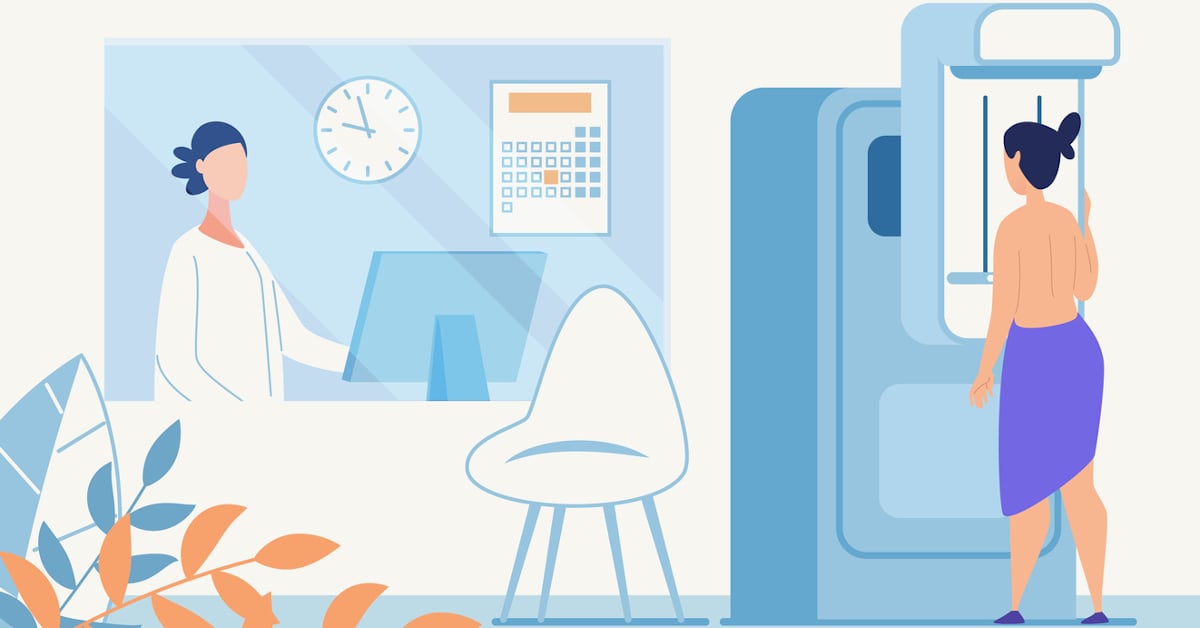
Beyond Traditional: Why 3D Mammography Leads the Way in Early Detection
-
Understanding the Advantages of 3D Mammography Over 2D
Mammograms save lives. These screening tests can find breast cancer early, when treatment often works best. But you might wonder which type of mammogram is right for you — 2D or 3D? The answers to these common questions may help you decide.
What’s the difference between 2D and 3D mammograms?
A traditional 2D mammogram provides a two-dimensional x-ray image of each breast, usually taken from two different angles, or views per breast for a total of four images. A 3D mammogram (also called digital breast tomosynthesis) takes many more images of each breast. A computer assembles these images into cross-sections, or slices, of breast tissue.
“When we look at the mammogram, we can actually view it slice by slice,” says Claire L. Streibert, MD, Chief of Breast Imaging at Fox Chase Cancer Center. “It’s almost like going through a loaf of bread and looking at each slice individually.”
This ability to see through overlapping layers of breast tissue may improve breast cancer detection, especially for women with dense breast tissue — breasts that have more fibrous and glandular tissue than fatty tissue.
Breast density is detected via a mammogram and included in your results — it’s not something you can feel. It’s important because dense breasts can make breast cancer harder to spot with a 2D mammogram. And having dense breasts raises the risk of getting breast cancer.
“Since we can see the breast slice by slice, a 3D mammogram helps us see through denser areas,” Dr. Streibert says.
What does having a 3D mammogram feel like?
During either type of mammogram, each breast is compressed between two plates to spread out the tissue. This provides a better image and allows less radiation to be used.
“The breast compression and the way you are positioned for the mammogram is the same,” Dr. Streibert notes. “You wouldn’t feel any difference when you’re getting a 3D mammogram.”
Are 3D mammograms better?
“Studies show that 3D mammograms can detect breast cancer more effectively. They also help decrease unnecessary callbacks”, Dr. Streibert says. That’s when patients are called back into the clinic after a mammogram to have more images taken. Although most callbacks do not result in a breast cancer diagnosis, they can be scary and inconvenient.
“Anything we can do to reduce callbacks is helpful,” Dr. Streibert says.
It also helps to choose a clinic that specializes in mammography. Fox Chase has dedicated breast imagers who read every mammogram. These experts have additional training in this specialty.
“Each of our breast radiologists reads at least 5,000 mammograms a year,” Dr. Streibert says. “At Fox Chase, you know you’re getting dedicated breast imagers reading your results, and that can make a big difference.”
Should you get a 3D mammogram?
The science is clear: patients should be screened with 3D mammography whenever possible. Dr. Streibert emphasizes that 3D mammograms are the established standard of care for early detection screening, regardless of breast tissue type.
“Even if you don’t have dense breasts, you will certainly benefit from getting a 3D mammogram over a traditional 2D scan,” notes Streibert. “The increased detail and accuracy provided by 3D technology significantly improve our ability to detect cancer at earlier stages, which is crucial for successful treatment outcomes.”
Starting annual screenings at age 40 is one of the most crucial factors in early and accurate breast cancer detection. "Annual screenings beginning at age 40 allow us to identify potential issues sooner, offering the best chance for effective treatment and a favorable prognosis," says Streibert. "We are thrilled that the United States Preventative Services Task Force now recognizes the importance of earlier screenings and recommends that women begin breast cancer screenings at age 40." Fox Chase Cancer Center has long advocated for this approach, believing that all women, regardless of risk level, should start preventative scans at this age.
Personalize your breast cancer screening.
It’s also important to know your personal risk for breast cancer. While mammograms are recommended for women at average risk, some women at high risk for breast cancer may benefit from additional screening tools, like ultrasound and MRI.
“At Fox Chase, we have a high-risk breast clinic and a comprehensive clinical genetics team that can help people assess their level of risk and find out what the best screening tests are for them,” Dr. Streibert says. “That’s one of the unique things we do at Fox Chase.”
To schedule a breast screening at Fox Chase, request an appointment online or call 888-369-2427.
